
Animal
17:09, 20-Feb-2019
Vulture: Sacred scavenging bird on the plateau
Updated
10:01, 28-Feb-2019
CGTN
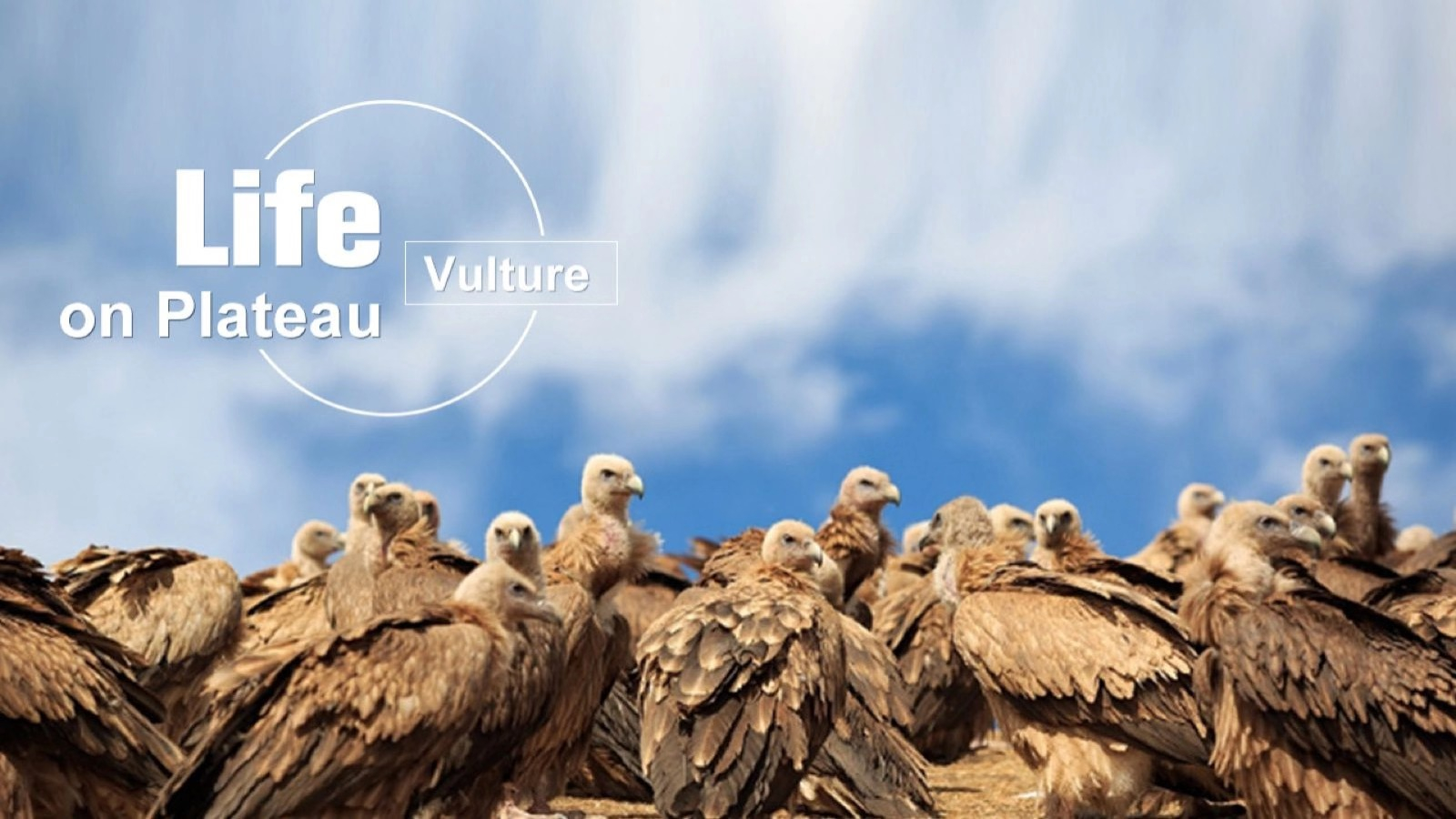
Vulture, a large scavenging bird of prey, is considered sacred on Tibetan plateau.
The majority of Tibet follows Vajrayana Buddhism, which teaches the transmigration of spirits. The followers believe there is no need to preserve the body after death. Therefore, sky burial is an age-old funeral practice in the region, which is believed to be an act of generosity on behalf of the deceased and his/her relatives.
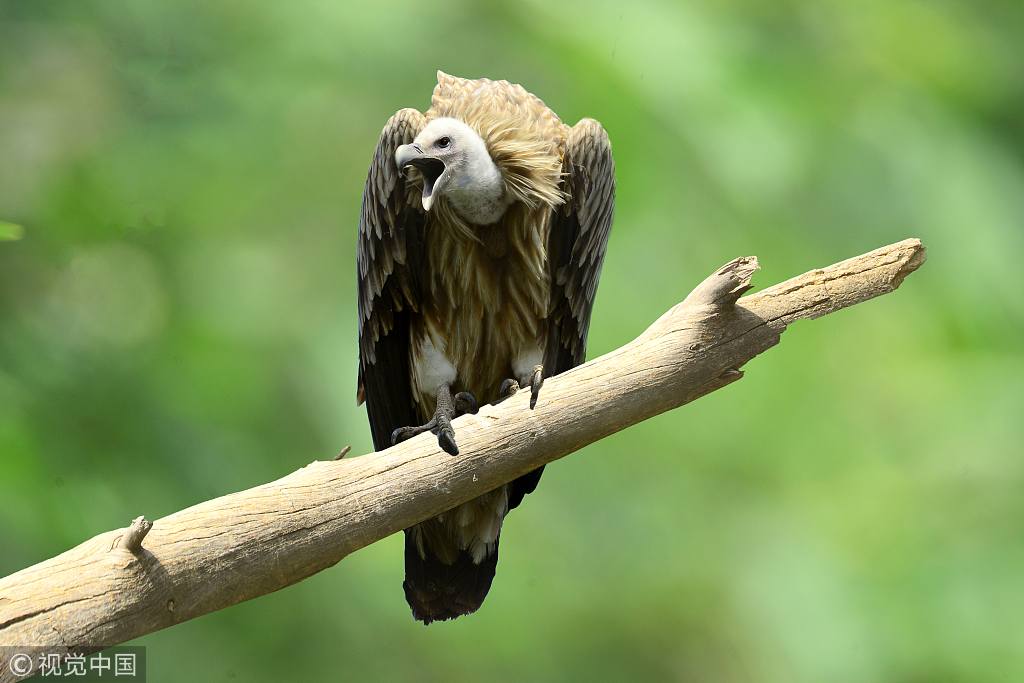
A vulture standing on the branch. /VCG Photo
A vulture standing on the branch. /VCG Photo
Vultures, who scavenge on dead animals, play an important role in sky burials. It is a large bird with a bald head, devoid of normal feathers.
The wingspan of the vulture can reach about 2 meters long and 0.6 meters wide. The base of the vulture's neck is covered with a ring of long feathers, which, like a human napkin, is thought to prevent the feathers from getting dirty during a feeding.
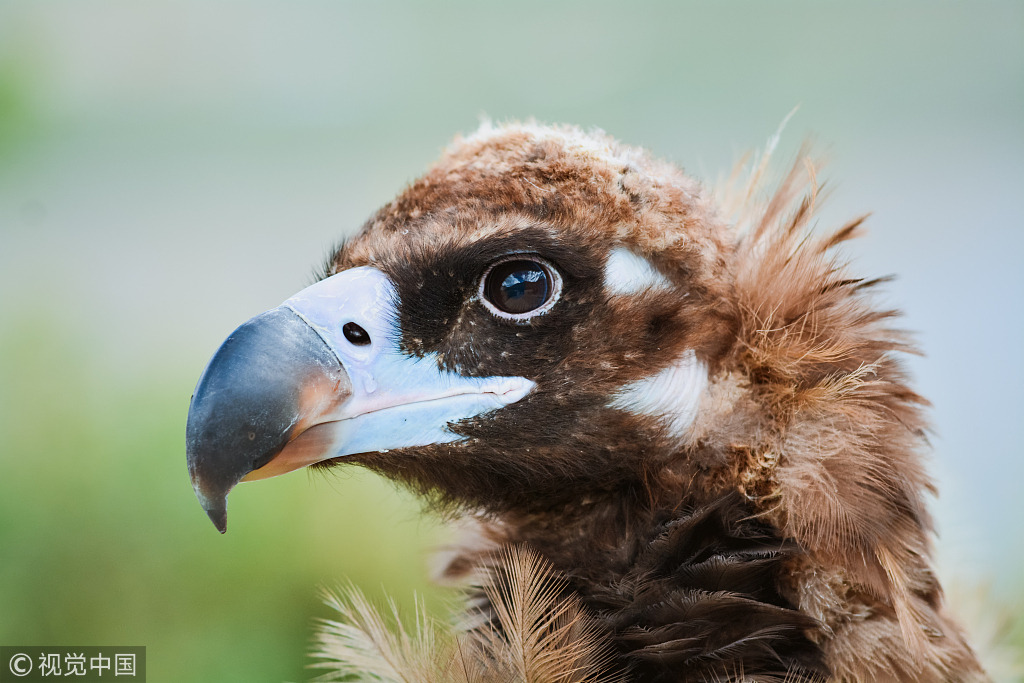
Vulture is a large bird with a bald head. /VCG Photo
Vulture is a large bird with a bald head. /VCG Photo
The bird mainly inhabits in arid and semi-arid alpine grasslands. They can live in the mountains of up to 2000-5000 meters above sea level. They usually live alone, occasionally they form into 3-5 small groups, especially in places rich in food. The largest group can have more than 10 vultures.
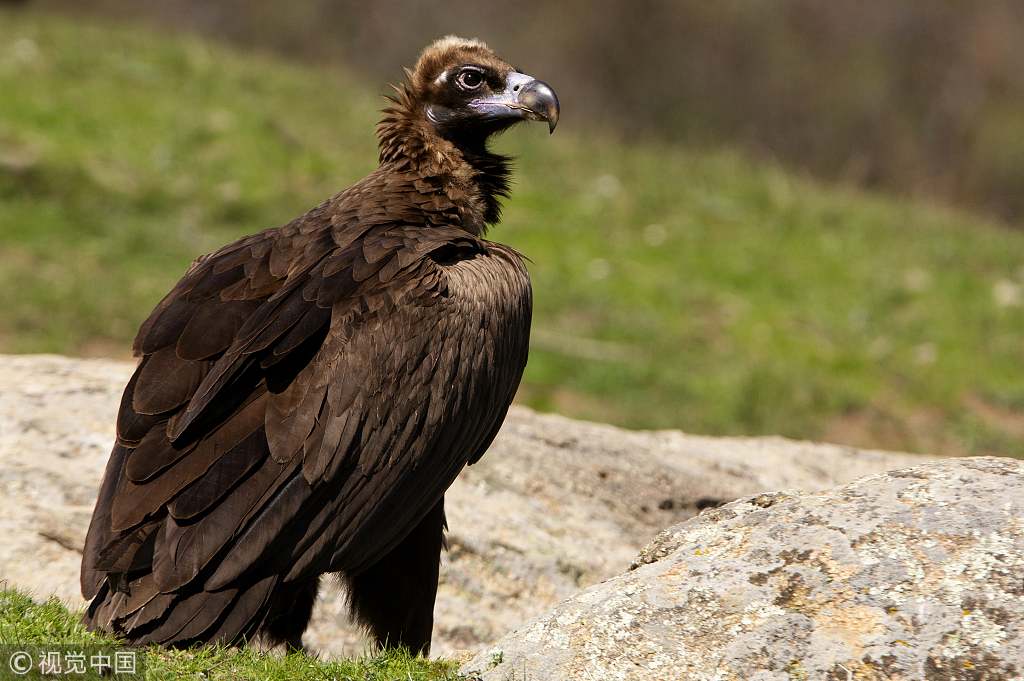
The bird mainly inhabits in arid and semi-arid alpine grasslands. /VCG Photo
The bird mainly inhabits in arid and semi-arid alpine grasslands. /VCG Photo
It mainly feeds on the carcasses of large animals and other decaying animals, that is why they are called "cleaners on the grassland." They often fly over mountains and plains to peep at the carcasses of animals. Occasionally, they attack small and medium-sized animals, amphibians, reptiles and birds, and sometimes livestock.
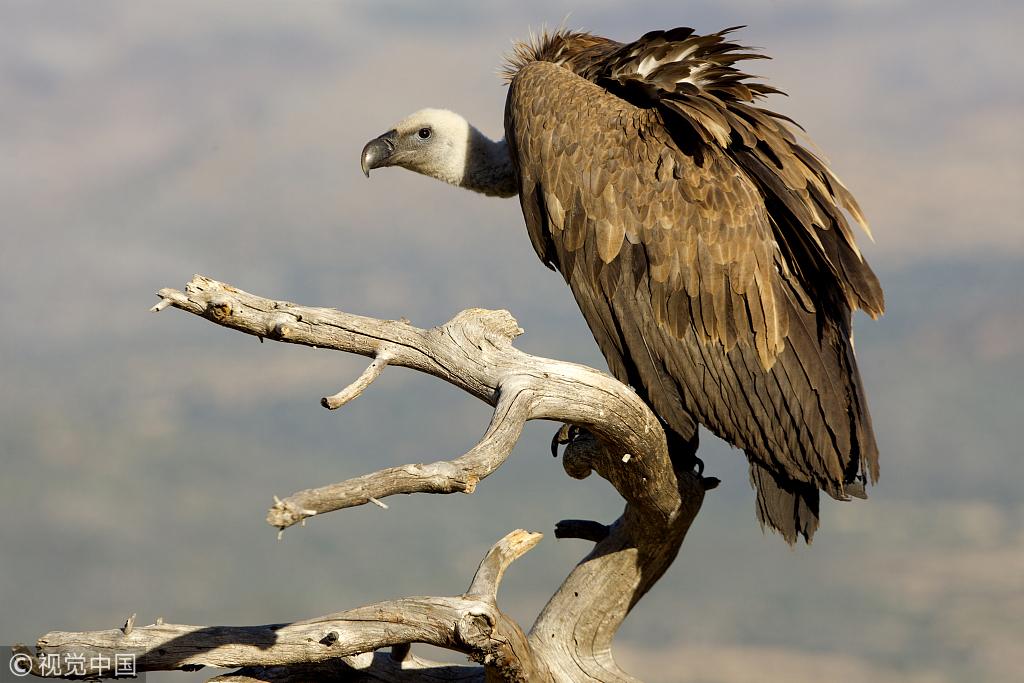
The population of vultures has declined significantly worldwide. /VCG Photo
The population of vultures has declined significantly worldwide. /VCG Photo
The population of vultures has declined significantly worldwide. In India and Nepal, the population of cultures has declined largely due to the residues of the veterinary drug Diclofenac, a medicine used to keep livestock healthy, in animal carcasses. In central Asia, the vulture population is threatened by bushmeat trade. Now the global population of vultures is estimated to be 14,000-20,000 mature individuals.
Vultures are classified as the second-class protected animal in China. It is evaluated as “Critically Endangered” by the International Union for Conservation of Nature.

SITEMAP
Copyright © 2018 CGTN. Beijing ICP prepared NO.16065310-3
Copyright © 2018 CGTN. Beijing ICP prepared NO.16065310-3